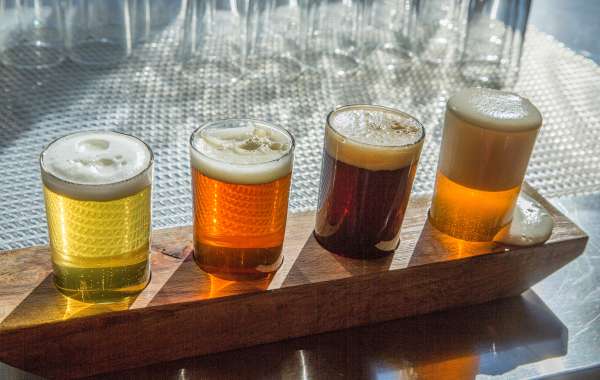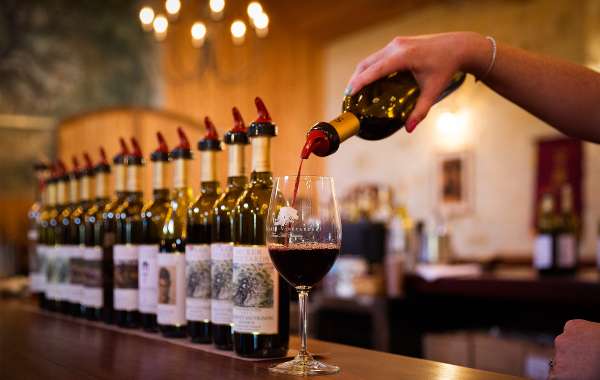Prolific soil and a Texan penchant for detail make the Piney Woods ideal for grape growing; the region’s trail of 20-plus wineries proves it. We drove a jagged line through northeast Texas, finding barrel rooms and rustic retreats overflowing with palate-pleasing drink.
The Piney Woods, with its rich soil and variable climate, makes for fertile wine country. More than 20 area wineries open their vineyards and cellar doors to day-tripping travelers with a touch of oenophilia. Sampling some of the wine trail’s highlights, we decanted the best from the rest.
Great Expectorations
Anticipating a long day, we charted an eastward path on the map that looked something like an EKG reading of a heartbeat: We started in Athens, headed east to Tyler, north to Pittsburg and finally southeast to Harleton.
Point A was Tara Vineyard & Winery, a glorious property owned by the Pierce family that features an inn, a winery, a fine dining restaurant, and rolling fields of Blanc du Bois vines. The front patio of the winery, perched on a hilltop, offered a panoramic view of the vineyards, and the location alone would have been worth the visit.
Then we went indoors and found wonders anew. The tasting room, open five days a week, offered ample space, a laid-back atmosphere and low lighting — perhaps to blind our tasting a bit. The wines were exquisite; the Cabernet Sauvignon was unsurprisingly a crowd-pleaser, while a blush wine called the Southern Sunset perked up our taste buds with its blend of whites and reds.
Carrying new cargo, we drove an hour to the south of Tyler, where Kiepersol Vineyard & Winery sprawls across 61 photogenic acres. Like our first stop, the property here is a family-owned, multipronged operation; the grounds encompass a winery, a restaurant, a bed-and-breakfast, and event venues.
But the wine is king. Kiepersol winemakers include a former Napa Valley apprentice and a former student of biology and chemistry. To explain the vineyard’s ideal growing conditions, the company invokes “tannin structures” and the influence of area geology on the climate.
The science pays off. Namely, my party of four paid—for crates of delicious Sémillon and ruby Cabernet.
After an hourlong drive northwest, we found ourselves at Los Pinos Ranch Vineyards, an idyllic location just south of Pittsburg. A tasting room, an 80-seat dining room and an outdoor tasting deck with a sweeping vista are open to the public, while tours of production facilities are offered by appointment.
More interested in the end product, we occupied the tasting deck, trying different wines via Los Pinos’ flights. The winery offers a red flight and a white flight, each served via a set of five carafes, or miniature corked bottles, in a neat, clear presentation.
Selections included dry wines with refined-sounding names and sweet wines marketed with a bit more spunk. Of the latter, our favorites were the fruity Rosie the Riveter and the Besitos de Chocolate, a thick dessert wine made from Black Spanish Lenoir grapes. They were too delicious to expectorate, and more bottles were purchased.
Polishing off our appetizer plate, we then headed 45 minutes southeast to Harleton, where Enoch’s Stomp Vineyard & Winery draws connoisseurs with its award-winning wine. Founded in 2004 by a fifth-generation grape grower from South Africa, the 90-acre retreat named after a biblical character definitely exudes an empyreal feel.
Enoch’s 12-acre vineyard yields at least five different grape varietals that produce seriously tasty drinks. Blanc du Bois, its signature white wine offered in dry, off-dry and sweet varieties, lives up to every bit of the hype. Light and fruity with a profile similar to Riesling, the sweet version was my favorite.
While a fine dining restaurant opens on Fridays and Saturdays for evening visitors, we enjoyed the pub-fare menu in the tasting room. Cheese, cured meats and even chips and queso went down our gullets in food-drink pairings that probably aren’t smiled upon.
We’ll just have to master that lesson on the next trip.
FUN FACT
Blanc du Bois, an American hybrid grape, is resistant to Pierce’s disease, a bacterial infection that attacks vinifera crops in the southern United States. That, and the fact that it’s delicious, is why Texas wineries love it.















